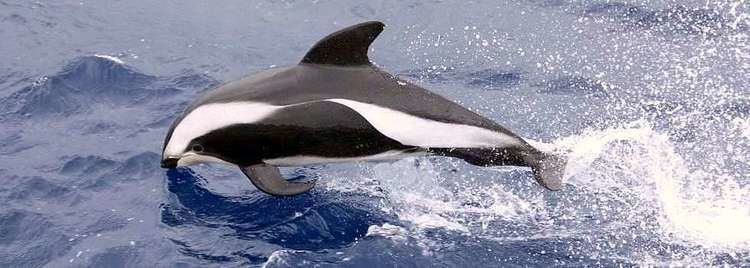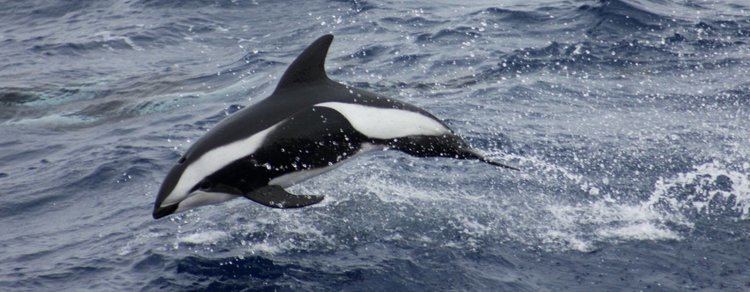Order Artiodactyla Family Delphinidae Rank Species | Phylum Chordata Higher classification Lagenorhynchus | |
 | ||
Similar Pacific white‑sided dolphin, Lagenorhynchus, Atlantic white‑sided dolphin, Cetaceans, Killer whale | ||
Hourglass dolphins
The hourglass dolphin (Lagenorhynchus cruciger) is a small dolphin in the family Delphinidae that inhabits Antarctic and subantarctic waters.
Contents

The dolphin has rarely been seen. It was identified as a new species by Jean René Constant Quoy and Joseph Paul Gaimard in 1824 from a drawing made in the South Pacific in 1820. It is the only cetacean to have been widely accepted as a species solely on witness accounts. By 1960, despite decades of whaling in the Southern Ocean, only three specimens had been recovered. As of 2010 only 6 complete and 14 partial specimens had been examined. Further information was obtained from 4 strandings and boats which searched for the dolphins in areas rarely visited by ships.

Though it is traditionally placed in the genus Lagenorhynchus, recent molecular analyses indicate that the hourglass dolphin is actually more closely related to the dolphins of the genus Cephalorhynchus.

Hourglass dolphins
Description

The hourglass dolphin is colored black and white and sometimes variations of dark grey. For this reason, it was colloquially known by whalers as a "sea cow". Each flank has a white patch at the front, above the beak, eye and flipper, and a second patch at the rear. These two patches are connected by a thin white strip, creating, loosely speaking, an hourglass shape; hence the common name of the dolphin. The scientific name cruciger is Latin for "cross-carrier". This refers to the area of black coloration, which, viewed from above, vaguely resembles a Maltese cross or cross pattée.

In its usual range the dolphin is easily identifiable. Only the southern right whale dolphin is of comparable size and lives as far south. The right whale dolphin does not have a dorsal fin, so the two species are easily distinguished. The fin considerably varies across individuals. It is generally tall and curved, and the curve may be particularly pronounced in older animals.
A fully grown adult is about 1.8 meters (5.9 ft) length and weighs 90–120 kilograms (200–260 lb). Males are thought to be slightly smaller and lighter than females, although the small number of specimens does not permit a firm conclusion.
Like all species of dolphin, they use echolocation to find food and communicate with other members of the their pod.
Population and distribution
The range is circumpolar from close to the Antarctic ice pack to about 45°S. The most northerly confirmed sightings were 36°S in the South Atlantic Ocean and 33°S near Valparaíso, Chile, in the Pacific. Sightings have been made most commonly from the south of New Zealand, around the South Shetland Islands and off Tierra del Fuego, Argentina. The species is unlikely to be particularly densely populated close to these lands.
One survey estimated the population size at more than 140,000 individuals.
Behaviour
Hourglass dolphins tend to move in groups of about 5 to 10. One International Whaling Commission study recorded a group of 60. Claimed groups of up to 100 have been found.
They share feeding grounds with other cetaceans such as sei, pilot, bottlenose and minke whales and southern right whale dolphins. They are regularly seen with fin whales. Whalers who were hunting these much larger animals used hourglass dolphins as "look-outs" to aid them in their hunt. Hourglass dolphins are keen bow-wave riders.
Examinations of the stomach contents of the few specimens indicate they eat various (unrecorded) types of squid and small fish.
Conservation
The hourglass dolphin is covered by the Memorandum of Understanding for the Conservation of Cetaceans and Their Habitats in the Pacific Islands Region (Pacific Cetaceans MOU). Although they have not been studied extensively they are of least concern to conservationists.
